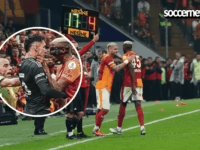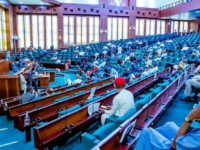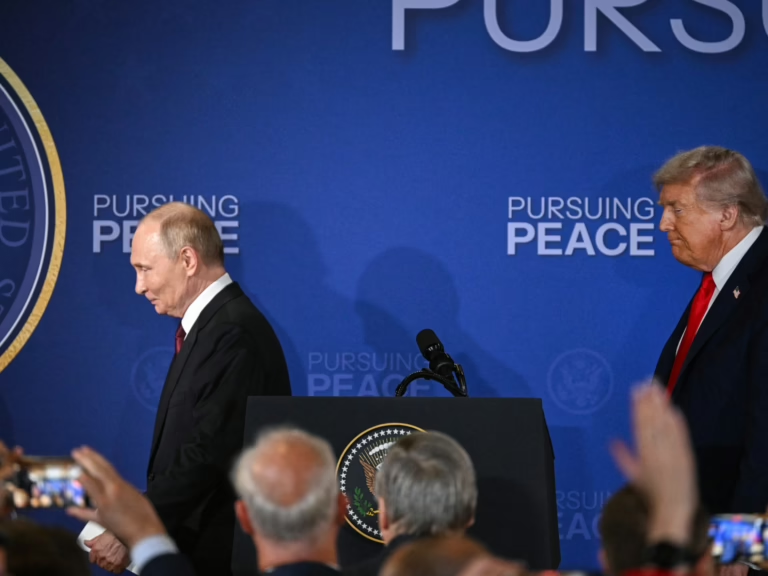Following the August summit between Russian President Vladimir Putin and U.S. President Donald Trump in Anchorage, Alaska, Russia seems to have accepted that efforts to establish peace in the conflict it initiated in Ukraine have largely failed. The momentum gained from this unprecedented meeting has, according to Russian officials, nearly dissipated.
Addressing Russia’s federal assembly on Wednesday, Deputy Foreign Minister Sergey Ryabkov acknowledged, “Regrettably, the strong impetus created in Anchorage towards reaching agreements has been significantly weakened.”
Ryabkov attributed much of the deadlock to European nations, accusing them of pursuing a “war to the last Ukrainian,” as reported by Russia’s state news agency TASS. His remarks effectively extinguished any lingering hopes for a swift resolution to the ongoing war, now entering its fourth year-a conflict Trump had pledged to resolve during his campaign.
Initially positioning himself as a peacemaker, Trump engaged Moscow early on and urged Ukraine to accept difficult territorial compromises. At one point, he publicly criticized Ukrainian President Volodymyr Zelenskyy at the White House, accusing him of “playing with the prospect of World War III.”
Despite culminating in the historic Alaska summit, Trump’s diplomatic efforts failed to secure a ceasefire or significant concessions from Russia. Since then, the U.S. president has expressed frustration with Putin’s unwillingness to negotiate, describing himself as “very disappointed” with the Russian leader, who claims to have seized 5,000 square kilometers (1,ukraine-war-key-events-day-1322/” title=”Russia…… War Update: Crucial Moments and Developments on Day 1,322″>930 square miles) of Ukrainian land in 2025 alone.
More recently, Trump has shifted his stance, advocating for Ukraine to reclaim all its occupied territories with assistance from Europe and NATO.
As Russian forces continue near-daily strikes on civilian targets, Zelenskyy has emphasized that only stronger punitive sanctions-particularly from the U.S.-can curb Moscow’s aggression. However, Trump has shown reluctance to endorse such measures.
Last month, U.S. Vice President JD Vance indicated that Washington is contemplating supplying Ukraine with long-range Tomahawk cruise missiles, a move Putin warned would escalate the conflict to “a whole new level.”
On Wednesday, Ryabkov cautioned that delivering Tomahawks to Ukraine would provoke “serious” repercussions and urged the U.S. to reconsider. He further stated that U.S.-Russia relations are “fracturing at their core,” placing the blame squarely on American actions.
Targeting of Ukraine’s Energy Systems
Violent aerial confrontations between Russia and Ukraine persisted into early Wednesday, with both sides accusing each other of attacks on civilian areas.
In Russia’s Belgorod region, near the Ukrainian border, a missile strike killed three residents in the village of Maslova Pristan, approximately 15 kilometers (nine miles) from the frontier, according to the local governor.
The assault partially destroyed a community center, with images showing a sports facility’s facade heavily damaged.
Moscow’s Defense Ministry reported intercepting 53 Ukrainian drones overnight, most targeting the Belgorod area, which frequently experiences such attacks.
Conversely, the Ukrainian air force stated that Russia launched at least 183 drones into Ukrainian territory between late Tuesday and early Wednesday. Ukrainian Prime Minister Yulia Svyrydenko confirmed that these strikes focused on railways and energy infrastructure.
One assault severely damaged a thermal power plant critical for Ukraine’s energy supply as winter approaches, according to electricity provider DTEK. Another attack in Kherson resulted in the deaths of two elderly civilians, local authorities reported.
Russia’s ‘Hybrid Warfare’ Across Europe
Meanwhile, European Commission President Ursula von der Leyen accused Russia of conducting “hybrid warfare” in Europe. This campaign includes weeks of airspace violations, cyberattacks, and sabotage of undersea communication cables, unsettling nations such as Estonia, Belgium, Denmark, Germany, Poland, and Romania.
“This is a calculated and targeted grey-zone operation against Europe, and Europe must respond accordingly,” she declared.






















